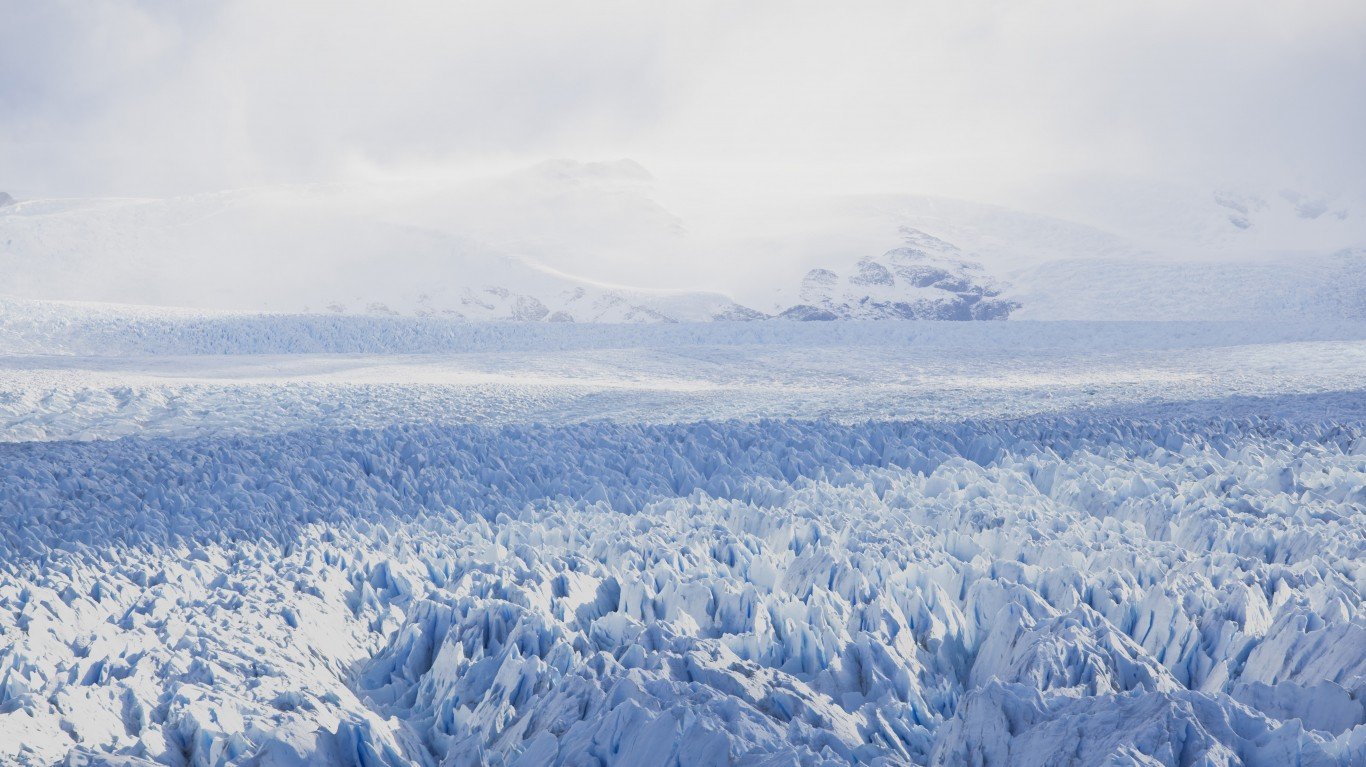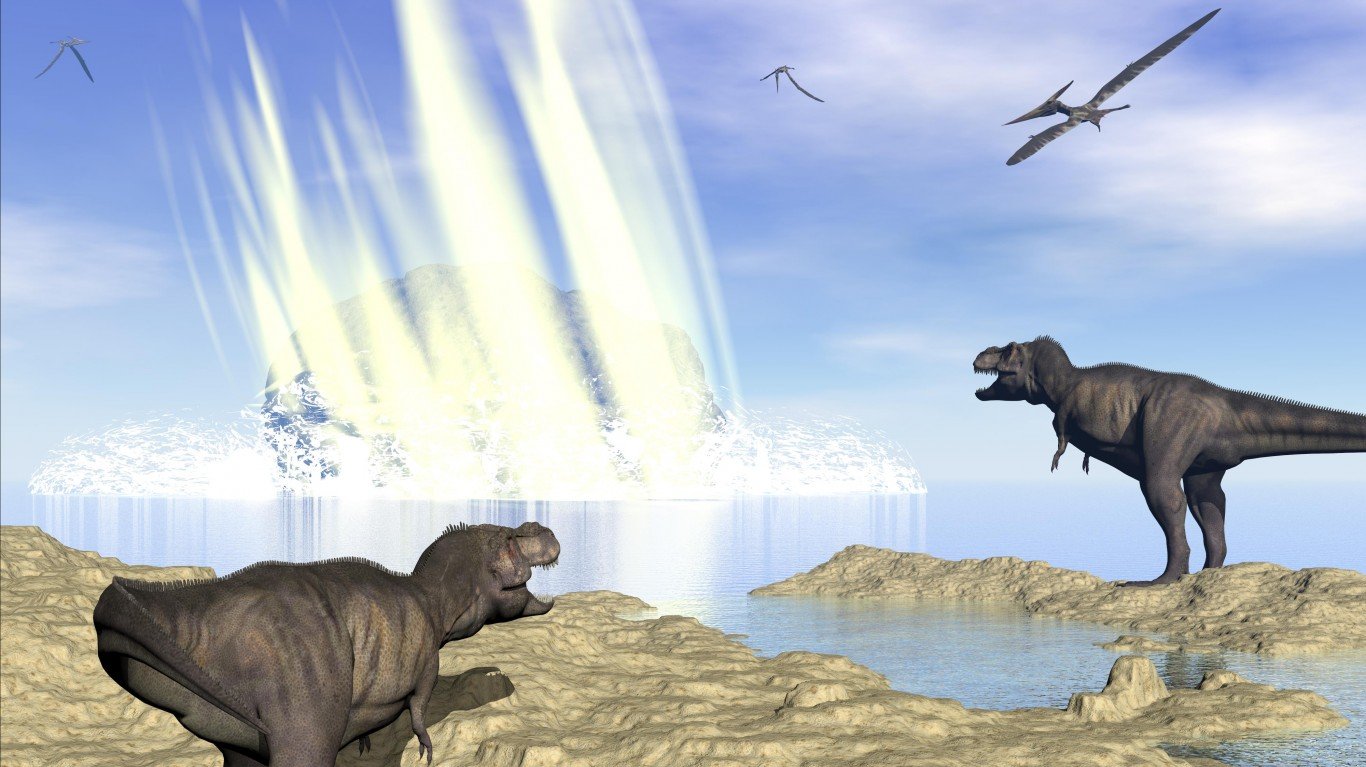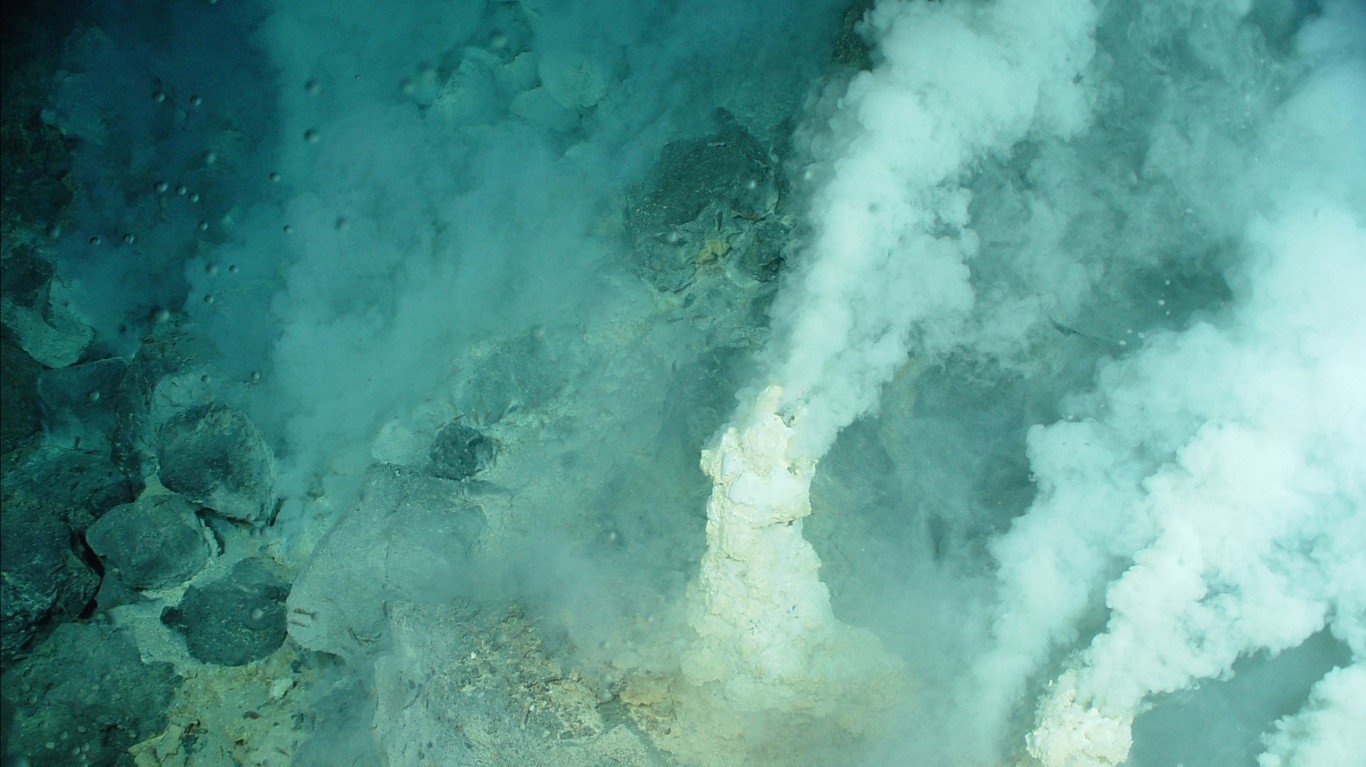
6. Events leading to Ordovician extinction
> Era: 440 million years ago
The Ordovician period ended some 440 million years ago, coinciding with the beginning of an ice age. An estimated 85% of all animal species on Earth died out, making it a larger extinction event than the K-T extinction (the event known to result in the extinction of the dinosaurs). While the Ice Age is generally accepted as the primary cause for the mass die-out, one theory suggests that during this period the Earth was bathed in deadly gamma radiation, which would have directly killed many of earth’s inhabitants, and also filled the atmosphere with nitrogen dioxide and create conditions that might have been the catalyst for the ice age that occurred.

7. Eruption leading to Permian extinction
> Era: 252 million years ago
Approximately 252 million years ago, about 90% of life on Earth died out. This event, often referred to as “The Great Dying” is the single largest extinction event in Earth’s history. The catalyst for the mass extinction is believed to be an explosion of volcanic activity in what is now Siberia. The explosion put over 700,000 cubic miles of ash into the atmosphere, which could have raised global temperatures by an average of approximately 18 F. The rise in temperatures and other atmospheric changes, including acid rain, devastated Earth’s species.
8. Underwater eruption leading to End-Triassic extinction
> Era: 201 million years ago
Around 200 million years ago, the supercontinent of Pangaea was breaking up. In what was the newly forming Atlantic Ocean, a range of undersea volcanoes were releasing tons of gases and lava into the ocean and atmosphere.. The massive volume of carbon and sulfur released into the atmosphere likely catalyzed a massive global extinction event in which 76% of all terrestrial and marine species were lost.

9. Chicxulub impact
> Era: 65 million years ago
In what may have been the largest meteorite collision in Earth’s history, a 186-mile-in-diameter asteroid strike is believed to have caused the extinction of the dinosaurs 65 million years ago.
The impact crater is located in the Yucatan Peninsula, Mexico. The environmental effects of the impact were likely immediate intense radiation, earthquakes, tsunamis, and mass burial under ejected matter. Over the course of months, effects were likely massive wildfires and acid rain; years of ozone loss and cooling temperatures; and decades of greenhouse warming.

10. Paleocene-Eocene Thermal Maximum
> Era: 56 million years ago
The PETM is considered one of the best ancient examples of modern climate change. During this 15 thousand to 20 thousand-year period around 56 million years ago, the Earth warmed by about 5 C due to CO2 concentrations increasing in the atmosphere. At the peak of the PETM, the oceans are thought to have been as warm as nearly 70 F off the coast of what is now Antarctica.






